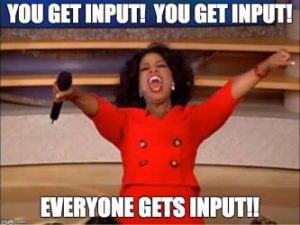 The more I teach and learn Chinese, the more convinced I become that mainstream classroom teaching focuses too much on low-volume, high-difficulty practice of a limited part of the language. Diane Neubauer (杜雁子),is a Mandarin learner and teacher from the United States. She has been teaching Mandarin for ten years, with students from elementary school age through adults. She has a BA in East Asian Studies and an MA in Religion. In addition to teaching full-time at a high school, Diane is involved in teacher training and writing. You can find her blogging with other language teachers here or on her YouTube channel. This article is the first in a series of three about comprehension-based teaching and learning. Now, over to Diane!
The more I teach and learn Chinese, the more convinced I become that mainstream classroom teaching focuses too much on low-volume, high-difficulty practice of a limited part of the language. Diane Neubauer (杜雁子),is a Mandarin learner and teacher from the United States. She has been teaching Mandarin for ten years, with students from elementary school age through adults. She has a BA in East Asian Studies and an MA in Religion. In addition to teaching full-time at a high school, Diane is involved in teacher training and writing. You can find her blogging with other language teachers here or on her YouTube channel. This article is the first in a series of three about comprehension-based teaching and learning. Now, over to Diane!
An introduction to comprehension based Chinese teaching and learning
I have been a long-time follower of Hacking Chinese, and I’m delighted to be able to contribute to this website and to share about comprehension-based teaching and learning of Mandarin Chinese, a particular emphasis both in the classes I teach and my own continued Chinese language development.
Why does comprehensible input matter for Chinese learners?
There are many methods of language instruction, and many teachers combine methods. Students may have preferences shaped by their previous experiences in language classes, their personalities, or any number of other factors.
There remains a lot of discussion and research into exactly how languages are acquired, but one aspect has been essentially agreed upon for some time: it is necessary to get input that you understand.
In other words, to acquire Chinese language, we need lots of exposure to understandable messages in Chinese that we hear and read. That input is often termed comprehensible input.
Some corollaries include:
- Input is better when not artificially limited around specific topics (such as trying to learn 20 words related to clothing all at once).
- Input is also better when not sequenced by what grammar may be perceived as “easier” or “harder” conceptually (such as waiting to tell learners phrases like 太好了! because “了” is perceived as too complex).
 Instead, language just needs to be made comprehensible to the learner through a variety of means, and heard and read in context enough by the learner that the words “stick” over time.
Instead, language just needs to be made comprehensible to the learner through a variety of means, and heard and read in context enough by the learner that the words “stick” over time.
The best input is that which is about something that interests you, and that contains lots of language you already understand, plus a little bit of new language, but not so much new that you would lose track of the meaning of the message.
The necessity of comprehensible input for language acquisition suggests that, if your goal is being able to communicate in Chinese, you will want to maximize your opportunities to receive that kind of input in and out of the classroom.
By communicate in Chinese, that includes being able to understand what you hear and read and being able to speak and write. If your goal is to be able to analyze and discuss the structure and forms of Chinese language (another worthy goal, though probably the goal for a smaller number of people), then you may want a course in Chinese linguistics in addition to finding comprehensible input for communication goals.
What are some principles behind a Chinese class based on comprehensible input?
Any language class will include some comprehensible input, even if the class emphasizes analyzing grammar patterns and memorizing vocabulary, and even if the teacher isn’t making input the priority. In language classes based on comprehensible input, the teacher seeks to maximize that input for the learners.
Rather than emphasizing spoken repetition of the language (like in the Audio-Lingual Method) or grammar study and applying rules to create output (like in the Grammar-Translation method), comprehension-based teaching seeks to maximize students’ exposure to Chinese that they can understand, supporting students with props, pictures, simpler and slower speech, and thoughtful use of the students’ native language to clarify meaning.
Maximising students’ exposure to Chinese that they can understand
There could be varying degrees of interaction between students and teacher. Students might do some tasks, projects, and speaking — but with consideration for what language the students already have acquired, not to “practice” or rehearse speaking as if memorized speech would become spontaneous, real-time, conversational ability.
Unrehearsed speaking is, in a comprehension-based perspective, a demonstration of what you’ve already acquired, and not how you get more language. Gains in language ability, whether vocabulary growth or an increasingly natural feel for correct word choice and grammar, come through understanding many messages in Chinese.
Comprehension-based teaching is an implicit approach to language instruction. Rather than explicitly stating grammar patterns and rules, or memorizing words and phrases, and practicing when and how to say them, in a comprehension-based class, massive amounts of input is provided, and the mind sorts out the vocabulary and grammar mostly unconsciously, without directly studying. Over time, students speaking emerges naturally.
What are some typical classroom procedures?
The teacher will likely maintain a high percentage of use of Chinese throughout class: perhaps 90% or more of the time. In that respect, there are similarities to immersion classes in which the teacher speaks entirely (or nearly entirely) in the target language.
However, in a comprehension-based class, the teacher has a greater emphasis on students’ comprehension, more careful pacing, and some limits to how much new language is encountered at once, not merely exposing students to language whether or not they understand.
Teachers with comprehension-based approaches use a variety of means to make language comprehensible: gestures, actions, pictures, voice inflection, and use of the students’ native language (if the students share a native language).
In order to maintain comprehension by the students and maximize time in class for meaning input and perhaps interaction, the teacher may occasionally use the students’ native language to clarify meaning.
This ends the first part in this series. The next part will discuss the underlying principles in more detail, introduce various methods that rely on them and also what effects these have on student motivation and proficiency. Continue reading…

4 comments
Love your story! How long will CI- Chinese teaching become mainstream? Hopefully soon!
我同意!上课时。老师多多说中文,学生自然就多听 ;o)
I enjoyed this post very much. This is not the drill practice type of learning. This is to help students to internalize the language and use the language as they progress and are ready.
see also “zone of proximal development”, developed by Vygotsky a hundred years ago.